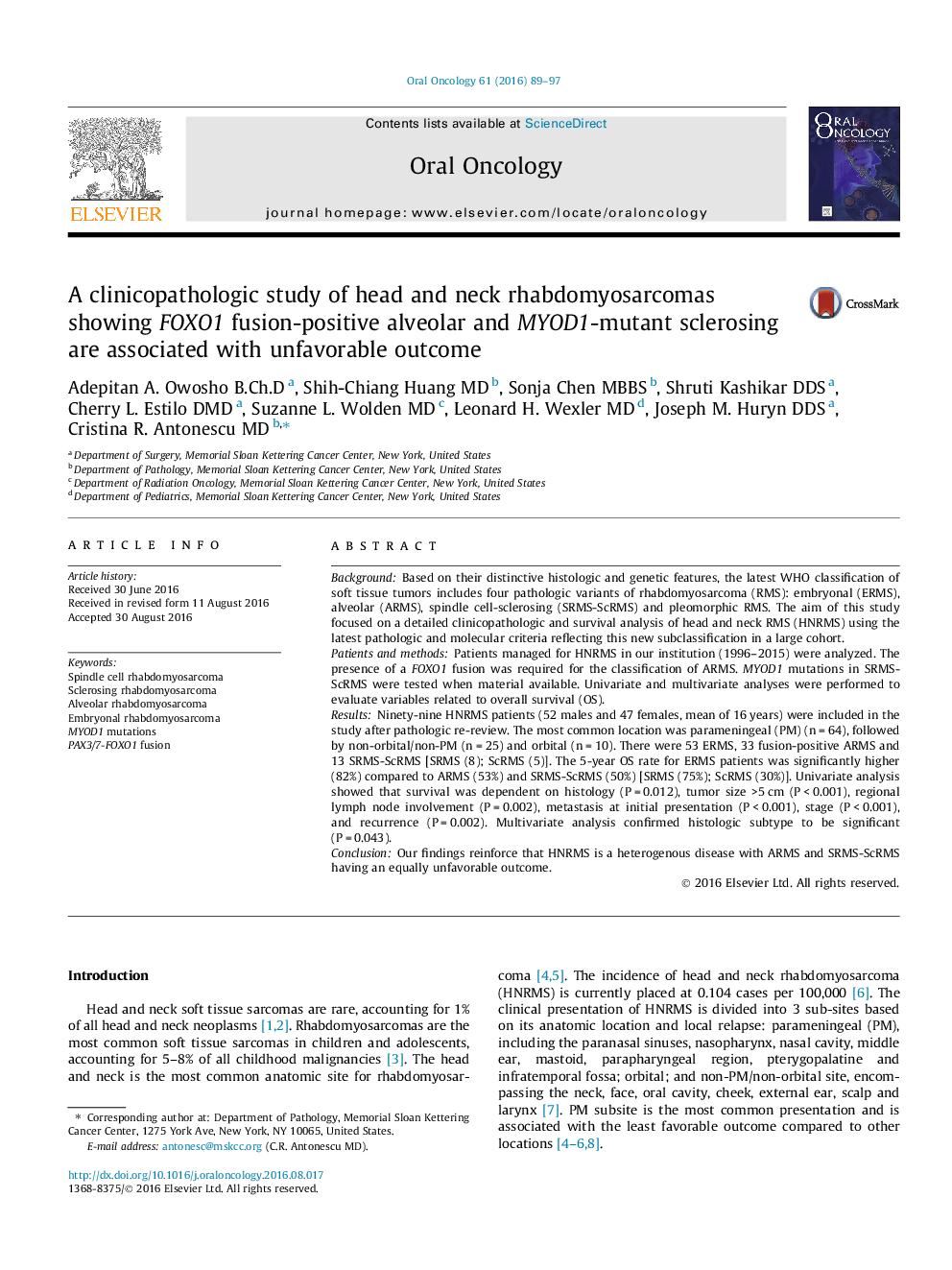| Article ID | Journal | Published Year | Pages | File Type |
|---|---|---|---|---|
| 3163728 | Oral Oncology | 2016 | 9 Pages |
•ARMS and SRMS-ScRMS have an equally unfavorable outcome.•MYOD1 mutations occur preferentially in ScRMS with an unfavorable outcome.•By multivariate analysis histologic type is the only significant prognostic factor.•FOXO1 gene fusion and MYOD1 mutations should be performed for risk stratification.
BackgroundBased on their distinctive histologic and genetic features, the latest WHO classification of soft tissue tumors includes four pathologic variants of rhabdomyosarcoma (RMS): embryonal (ERMS), alveolar (ARMS), spindle cell-sclerosing (SRMS-ScRMS) and pleomorphic RMS. The aim of this study focused on a detailed clinicopathologic and survival analysis of head and neck RMS (HNRMS) using the latest pathologic and molecular criteria reflecting this new subclassification in a large cohort.Patients and methodsPatients managed for HNRMS in our institution (1996–2015) were analyzed. The presence of a FOXO1 fusion was required for the classification of ARMS. MYOD1 mutations in SRMS-ScRMS were tested when material available. Univariate and multivariate analyses were performed to evaluate variables related to overall survival (OS).ResultsNinety-nine HNRMS patients (52 males and 47 females, mean of 16 years) were included in the study after pathologic re-review. The most common location was parameningeal (PM) (n = 64), followed by non-orbital/non-PM (n = 25) and orbital (n = 10). There were 53 ERMS, 33 fusion-positive ARMS and 13 SRMS-ScRMS [SRMS (8); ScRMS (5)]. The 5-year OS rate for ERMS patients was significantly higher (82%) compared to ARMS (53%) and SRMS-ScRMS (50%) [SRMS (75%); ScRMS (30%)]. Univariate analysis showed that survival was dependent on histology (P = 0.012), tumor size >5 cm (P < 0.001), regional lymph node involvement (P = 0.002), metastasis at initial presentation (P < 0.001), stage (P < 0.001), and recurrence (P = 0.002). Multivariate analysis confirmed histologic subtype to be significant (P = 0.043).ConclusionOur findings reinforce that HNRMS is a heterogenous disease with ARMS and SRMS-ScRMS having an equally unfavorable outcome.
